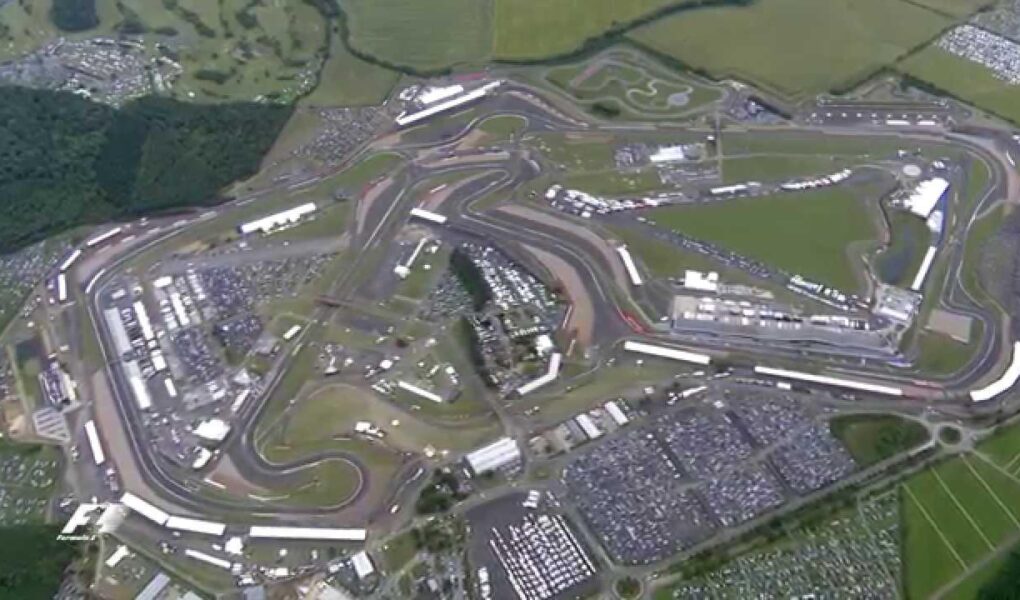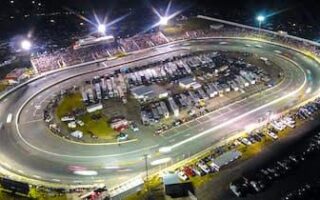Nestled in the heart of Northamptonshire, Silverstone Raceway stands as a hallowed ground for motorsport enthusiasts and casual spectators alike. Renowned as the birthplace of the Formula One World Championship, the circuit has evolved far beyond its storied past, now boasting a rich tapestry woven from thrilling races, iconic moments, and a vibrant community of fans. With its sweeping curves and challenging configurations, Silverstone offers a canvas where skill and speed collide, captivating the hearts of those who flock to its paddocks each year. This article will explore the many facets of Silverstone Raceway—from its historical significance and architectural evolution to the unforgettable experiences it offers to racing aficionados and families alike. Join us on a journey through the twists and turns of a venue that continues to shape the future of motorsport while honoring its illustrious legacy.
Table of Contents
- The Historical Significance of Silverstone Raceway
- Exploring the Unique Layout and Challenging Corners
- Visitor Experience: Amenities and Attractions Beyond the Track
- Tips for Attending a Race Day at Silverstone
- Q&A
- To Conclude
The Historical Significance of Silverstone Raceway
Silverstone Raceway is not just a venue for motorsport; it is a monument to the evolution of racing and a pivotal chapter in the history of automotive competition. Originally an airfield during World War II, it was transformed into a racing circuit in 1948 and has hosted numerous iconic events, including the inaugural Formula One World Championship race in 1950. This historic occasion marked a new era for motorsport and established Silverstone as a cornerstone in the realm of international racing. Visitors come to witness not only the thrill of speed but also a legacy shaped by decades of competition, innovation, and celebration.
The track has undergone several transformations over the years, adapting to the advances in technology and the changing dynamics of motorsport. Significant milestones include the introduction of the Grand Prix Collection, which chronicles the venue’s storied past and serves as a cherished archive for fans. Key features of Silverstone that highlight its importance include:
- The British Grand Prix: A staple in the F1 calendar and a favorite among fans.
- Iconic corners: Such as Maggotts, Becketts, and Chapel, which test the skill of the drivers.
- Technological innovation: Continual upgrades and safety improvements that set trends in the industry.
Alongside thrilling races, Silverstone is known for fostering a sense of community among racing enthusiasts. The annual summer events attract crowds from all over the globe, uniting fans, teams, and drivers in a shared passion for motorsport. With its rich history and commitment to excellence, Silverstone remains a beacon of racing heritage, influencing generations of motorsport fans and participants alike.
Exploring the Unique Layout and Challenging Corners
When navigating the twists and turns of Silverstone, drivers encounter a circuit that is as much an engineer’s playground as it is a test of skill. Each corner presents its own unique characteristics, challenging even the most seasoned racers. From the high-speed, sweeping curves of Copse to the tight, technical nature of the Chapel, every inch of the layout demands precision. The drivers must continually adapt their racing lines and braking points as they progress through the lap, honing their instincts while battling the relentless forces of speed and gravity.
The layout is further accentuated by its iconic features, making it a beloved destination for both competitors and fans alike. Notable turns include:
- Maggotts and Becketts: A series of fast, flowing corners that require a rhythmical driving style.
- Brooklands: A challenging left-hand corner that tests a driver’s commitment and cornering finesse.
- Luffield: A complex right-hander that can lead to overtaking opportunities if executed well.
To fully appreciate the intricacies of each corner, it’s important to understand how the elevation changes and track surface interact. Here’s a comparative overview of two significant corners:
| Corner | Characteristics | Key Considerations |
|---|---|---|
| Copse | High-speed, long right-hander | Brake late, smooth steering required |
| Club | Tight, technical right-hander | Important for exit speed onto the main straight |
Visitor Experience: Amenities and Attractions Beyond the Track
Visitors to Silverstone Raceway can expect more than just high-octane racing excitement; the venue offers an array of amenities and attractions designed to enhance the overall experience. Dining options abound, featuring everything from quick snacks to fine dining, all prepared to fuel a day of racing. Additionally, well-maintained restroom facilities and Wi-Fi access keep guests comfortable and connected. For those interested in take-home memories, the on-site merchandise shops provide an assortment of branded apparel, memorabilia, and racing-themed gifts to commemorate the visit.
Beyond the track, Silverstone is surrounded by a host of attractions that cater to various interests. Discover local history by visiting nearby museums or taking leisurely tours of charming villages showcasing traditional British architecture. Nature enthusiasts can enjoy picturesque walks along the scenic countryside trails. Here’s a quick look at some nearby attractions:
| Attraction | Distance from Track | Description |
|---|---|---|
| Silverstone Circuit Museum | 0.5 miles | A journey through the history of motorsport. |
| Towcester Museum | 3 miles | Local history and artifacts showcasing the region. |
| Stowe House | 4 miles | Stunning architecture and gardens open for tours. |
| Salcey Forest | 5 miles | A beautiful forest with walking trails and picnic spots. |
Tips for Attending a Race Day at Silverstone
Attending a race day at Silverstone is an exhilarating experience that requires some preparation to make the most of it. Start by planning your travel in advance; with thousands of fans flocking to the venue, consider carpooling or utilizing public transport. It’s recommended to arrive early to enjoy the atmosphere and avoid the rush. While at the circuit, dress comfortably and layer your clothing to accommodate changing weather conditions. Essential items to bring along include:
- Ear protection: The roar of the engines can be deafening.
- Portable charger: Keep your devices charged for photos and updates.
- Sunscreen: Protect yourself from the sun, even on overcast days.
- Snacks and water: While there are food vendors, lines can be long.
Once you’ve settled in, explore the various zones of the Silverstone circuit to fully immerse yourself in the race day experience. Don’t forget to check the event schedule for race times and pit stop activities. Make use of the fan zones, where there are often driver meet-and-greets, merchandise stalls, and live commentary. To help you navigate the day, here’s a quick overview of key areas:
| Area | Description |
|---|---|
| Grandstands | Best views of the race; book in advance! |
| Food Courts | A variety of food options to fuel your day. |
| Merchandise Stands | Official gear; perfect for souvenirs. |
| Viewing Areas | Alternative spots to watch the race; less crowded. |
Q&A
Q&A: Discovering Silverstone Raceway
Q: What is Silverstone Raceway?
A: Silverstone Raceway is a renowned motorsport circuit located in Northamptonshire, England. Originally a wartime airfield, it became the home of the British Grand Prix in 1948 and has since evolved into one of the most iconic racetracks in the world, hosting a variety of racing events, including Formula 1, MotoGP, and endurance races.
Q: Why is Silverstone considered an iconic track in motorsport?
A: Silverstone’s significance stems from its rich history and its challenging layout that tests drivers’ skills. The circuit is famed for its high-speed corners, including the legendary Maggotts and Becketts complex, which demand precision and bravery. It also boasts a passionate fan base that adds to the vibrant atmosphere during race weekends.
Q: What recent updates or changes have been made to the circuit?
A: In recent years, Silverstone has undergone several renovations to enhance safety and accessibility. Changes include the resurfacing of the track, improved facilities for teams and spectators, and the installation of modern hospitality suites. These updates aim to maintain the circuit’s reputation while accommodating ever-evolving safety standards in motorsport.
Q: How does Silverstone Raceway engage with fans?
A: Silverstone actively engages with fans through various initiatives, including experiential zones, meet-and-greet events with drivers, and fan forums during race weekends. The venue also hosts family-friendly activities, trackside entertainment, and access to paddock areas, ensuring that visitors have a memorable experience beyond just the races.
Q: Can you tell us about the challenges facing Silverstone?
A: Like many historic racing venues, Silverstone faces challenges such as rising operational costs, competition from other circuits, and the need for continued investment to maintain its infrastructure. Additionally, British weather can be unpredictable, adding another layer of complexity for both organizers and participants.
Q: What other events can be experienced at Silverstone besides F1?
A: Silverstone hosts a diverse range of motorsport events throughout the year, including motorcycle racing, touring cars, and classic car shows. It also offers driving experiences, allowing fans to get behind the wheel of high-performance vehicles and train alongside professional instructors. The annual Silverstone Classic showcases vintage racing cars, offering a nostalgic celebration of motorsport history.
Q: How can visitors plan their trip to Silverstone Raceway?
A: Visitors can plan their trips by checking the official Silverstone website for event schedules, ticketing information, and visitor guidelines. The venue is well-connected by road and rail, making it accessible for fans traveling from various regions. Booking accommodations in advance is recommended, particularly during major race weekends when demand is high.
Q: What is the future vision for Silverstone Raceway?
A: The future vision for Silverstone Raceway includes continuing to host prestigious motorsport events while embracing sustainability and innovation. Efforts are being made to reduce the carbon footprint of the venue, with initiatives such as improved waste management and energy-efficient practices. Silverstone aims to remain at the forefront of motorsport, evolving with the changing landscape while preserving its historic legacy.
Whether a seasoned motorsport enthusiast or a curious newcomer, Silverstone Raceway offers an unforgettable glimpse into the world of high-speed racing!
To Conclude
As the sun sets over Silverstone Raceway, casting long shadows across its iconic sprawling tarmac, one cannot help but feel the palpable energy that infuses this historic venue. From the roaring engines that echo through its grandstands to the passionate cheers of thousands, Silverstone is more than just a racing circuit; it is a canvas painted with the brushstrokes of speed, skill, and the indomitable spirit of motorsport.
Having explored its storied past and exciting present, we are reminded that Silverstone serves as a testament to the evolution of racing. It has been the backdrop for unforgettable moments, where legends have been born and records shattered. With each lap that passes, the raceway continues to inspire generations of fans and drivers alike, drawing them into its orbit of adrenaline and excitement.
As we close the chapter on this exploration of Silverstone, we invite you to keep the spirit of this cherished circuit alive within you. Whether you’re a seasoned racing enthusiast or an occasional viewer, Silverstone’s legacy remains ever relevant. Its future is bright—filled with the promise of new stories waiting to unfold on its hallowed grounds. So, let the engines roar, the tires screech, and the heart race, for Silverstone is poised to remain a beacon of speed and passion for years to come.



